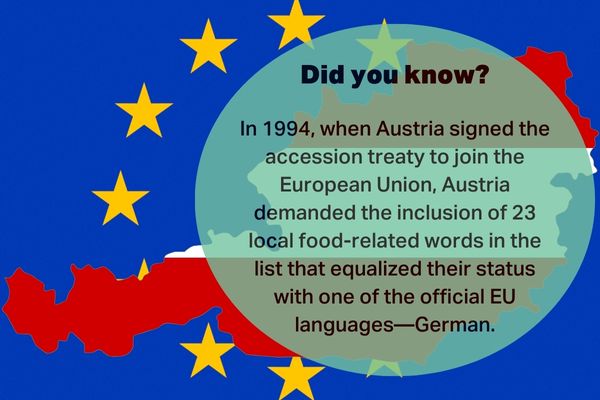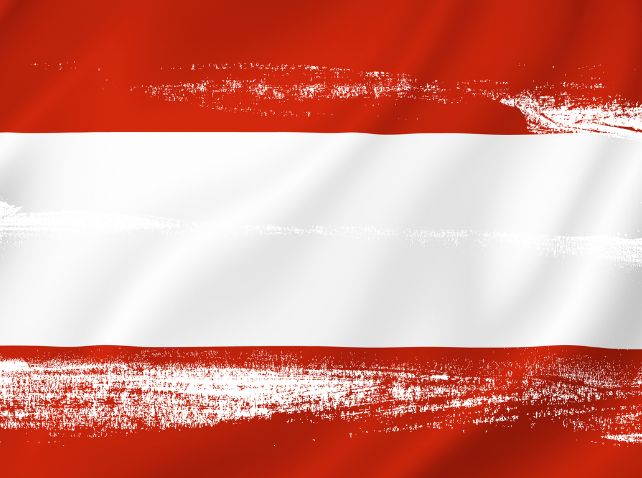The story is more complex than you might think! Dive into the fascinating history of the Habsburg Empire, Austria's cultural ties with Germany, and the evolution of Austrian German. Learn about Schönbrunner Deutsch, once the imperial language, and how Austrian dialects still vary today.
Austria’s official language is German, but why does Austria speak German? The answer lies in its historical and cultural ties to the German-speaking world. However, it is not the same as Standard German (Hochdeutsch) spoken in Germany. Instead, Austrians use a regional variation known as Austrian German (Österreichisches Deutsch) or simply Austrian (Österreichisch). The differences between Standard German and Austrian German are subtle, mostly involving grammar rules and vocabulary. Students learning Austrian German may notice only minor differences, such as unique words for certain things.

Austrian German is not only the official language in Austria but also spoken in nearby regions, like parts of Italy close to the Austrian border. Within Austria, there are many regional dialects shaped by migration during the Austro-Hungarian Empire and the isolation of some communities in hard-to-reach areas, which helped preserve local speech patterns.
Austria speaks German because of its long history and close ties to the German-speaking world. The language has deep roots in the region, shaped by migration, empires, and cultural traditions. Below is a detailed explanation of why German became the dominant language in Austria.

Germanic Tribes
In the 6th century, Germanic tribes like the Bavarii settled in the region we now call Austria. These tribes brought their language, which evolved over time and became the foundation for the German spoken in Austria today.
The Holy Roman Empire
and the Habsburgs
For centuries, Austria was part of the Holy Roman Empire, which included many German-speaking regions. German was the primary language for administration, culture, and communication within the empire.
Support
Each post on our site takes 10 to 20 hours to prepare, and we’re a small, independent project. We really need your support to keep things going! Your help means everything to us. Please consider supporting us, so we can keep bringing you awesome content.
Thanks for being awesome!
The Habsburg dynasty, which ruled Austria from the late Middle Ages, used German as their official language. This helped establish German as the dominant language across the Austrian territories.
Austrian German
In Austria, the official language is Austrian German, a variation of Standard German (Hochdeutsch). The differences are small but noticeable, including some unique grammar rules and vocabulary:
- Austrians use “Marille” instead of “Aprikose” for apricot.
- They say “Sackerl” instead of “Tüte” for a bag.
Although Austrian German differs slightly, it remains mutually intelligible with Standard German.

Austria and
the German Unification
In 1871, Prussia united many German-speaking states to form Germany. Austria didn’t join because it was the center of the Austro-Hungarian Empire, which included regions where people spoke Hungarian, Czech, and other languages. This event marked a shift in Austria’s identity, setting it apart from Germany.
Language During
the Austro-Hungarian Empire
Even though the Austro-Hungarian Empire was multilingual, German remained a key administrative language. It unified the empire’s diverse regions and was spoken by a large part of the population.

World War I and
the Austrian Republic
Even during the Austro-Hungarian Empire, which included many non-German-speaking regions, German was one of the official languages. After the Austro-Hungarian Empire collapsed following World War I, Austria became a smaller, independent republic. German remained the primary language, as most of the population was ethnically and linguistically German.

Subscribe
Explore Vienna like a local and discover nearby treasures.
Join our mailing list!
The Nazi Annexation
and Post-War Independence
In 1938, Austria was annexed by Nazi Germany, briefly uniting the two countries again. However, after World War II, Austria regained its independence and developed a separate national identity. Today, Austrians see themselves as distinct from Germans, but the shared language remains a strong cultural bond.
Local Dialects
Austrian-German includes many local dialects, shaped by migration and regional isolation over centuries.
- In remote areas, unique dialects developed, often influenced by local traditions and the limited movement of people.
- Some dialects are so distinct that even native German speakers from other regions might struggle to understand them.
Austrian Food Words
| Austrian | German | English |
|---|---|---|
| Erdapfel | Kartoffel | Potato |
| Paradeiser | Tomate | Tomato |
| Fisolen | Grüne Bohnen | Green beans |
| Karfiol | Blumenkohl | Cauliflower |
| Kren | Meerrettich | Horseradish |
| Melanzani | Aubergine | Eggplant |
| Paprika | Paprikaschote | Bell pepper |
| Vogerlsalat | Feldsalat | Lamb’s lettuce |
| Zucchini | Zucchino | Zucchini |
| Marille | Aprikose | Apricot |
| Zwetschke | Pflaume | Plum |
| Obers | Sahne | Cream |
| Topfen | Quark | Curd cheese |
| Schlagobers | Schlagsahne | Whipped cream |
| Germ | Hefe | Yeast |
| Semmel | Brötchen | Bread roll |
| Kipferl | Hörnchen | Croissant |
| Faschiertes | Hackfleisch | Minced meat |
| Powidl | Pflaumenmus | Plum jam |
| Palatschinke | Pfannkuchen | Pancake |
| Eierspeise | Rührei | Scrambled eggs |
| Ribisel | Johannisbeere | Red currant |
| Stangensellerie | Bleichsellerie | Celery stick |
A Language
Shaped by History
Austria speaks German because of its deep historical roots in the German-speaking world. The language evolved during the migration of Germanic tribes and was solidified by the Holy Roman Empire and the Habsburg dynasty. Even after political changes, such as the separation from Germany in 1871 and independence after World War II, Austrian German remains a key part of Austrian identity.

This shared language reflects Austria’s long-standing connections to the German-speaking world while highlighting its unique cultural flavor.
Why Does Austria
Speak German?
Austria speaks German due to historical ties to the German-speaking world, starting with Germanic tribes in the 6th century and solidified under the Holy Roman Empire and Habsburg rule.
Join Our Vibrant Community
Are you passionate about discovering the hidden gems of Vienna and its surroundings? Follow us on social media and become part of our enthusiastic community!
Why Follow Us?
- Exclusive Content: Each post is a labor of love, taking between 10-30 hours to create. We share breathtaking photos, captivating stories, and invaluable tips.
- Stay Updated: Never miss out on exciting events, new attractions, and must-visit spots in and around Vienna.
- Support Independent Projects: We are an independent project, and your follows help us cover the costs of running this page. Your support is crucial!
Your Support Matters!
Every follow, like, and share directly supports our work. It helps us continue bringing you the best content and ensures we can keep this site running. By following us, you’re not just staying informed – you’re helping us grow and thrive.
Don’t miss out! Click the links above and start following us today. We can’t wait to connect with you!





